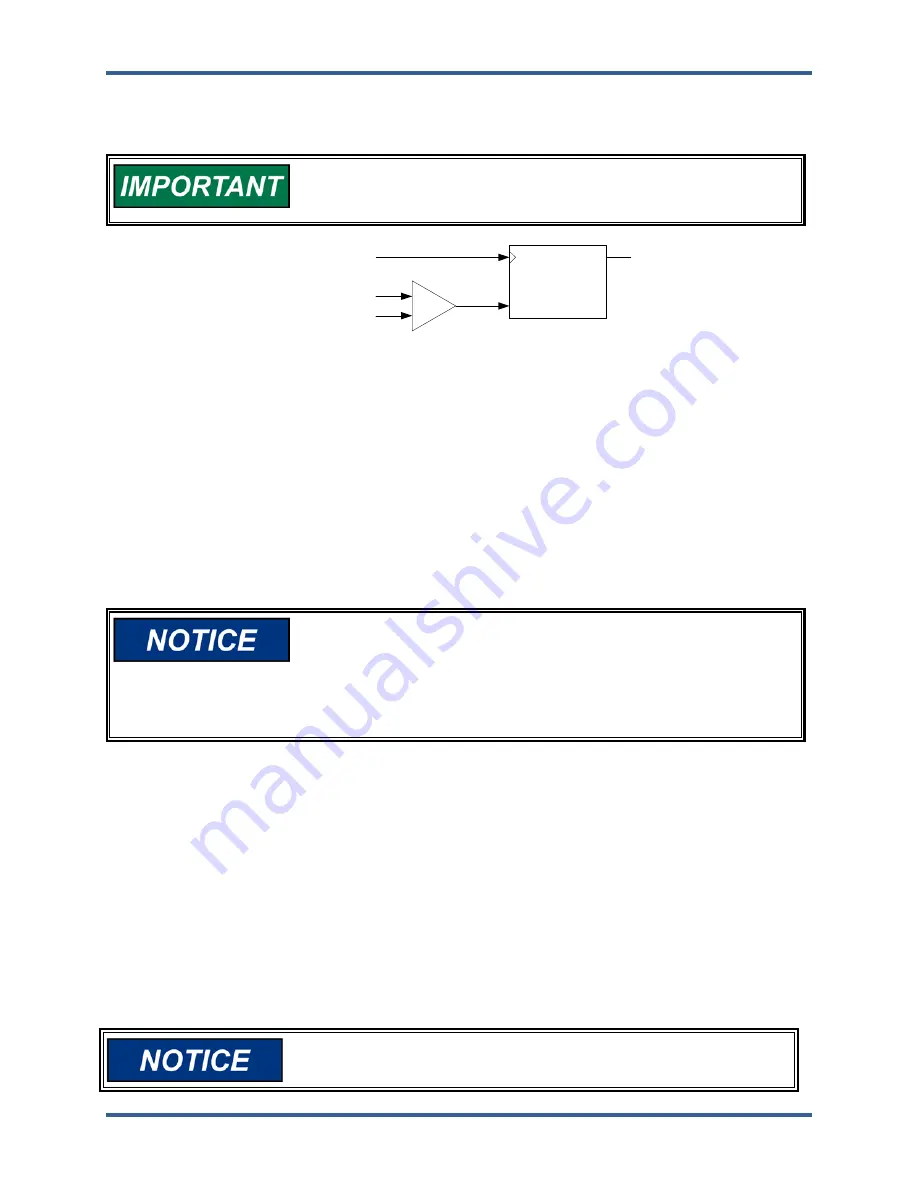
Manual 35086
ProTech-GII with Math Functions
Woodward
66
Speed Fail Timeout Trip
If “Speed Fail Timeout Trip” is enabled, the sensed speed must exceed the Speed Fail Setpoint within the
Speed Fail Timeout Time after a Start command, otherwise a Speed Fail Timeout Trip occurs.
The Speed Fail Timeout trip is cleared by the reset function (the trip
and alarm reset function, not the reset input to the timer in the
diagram below) even if speed is still below the Speed Fail Setpoint.
Timer
Reset
Start
Start
Expired
Speed ok
Trip
+
-
Voted Speed
Speed Fail Setpoint
Figure 3-13. Speed Fail Timeout Trip Diagram
Start Example with Speed Fail Timeout Trip
First, any trips or alarms are cleared by issuing a reset command either by pressing the reset key,
momentarily closing the reset contact, or issuing the Reset command on the Modbus interface.
When the turbine or equipment is ready to be started, the Speed fail timer is started by pressing the start
key or by momentarily closing the start discrete input. The timer expires when it reaches the Speed fail
timeout value. If speed does not exceed the Speed fail set point before the timer expires, the unit trips.
If the unit is being restarted after a normal roll-down where there was no trip, the unit does not require a
reset. The Speed fail trip is overridden because the Speed fail timer is cleared whenever speed exceeds
the Speed fail set point. The Speed fail timer should be started by the operator when the turbine or
equipment is ready to be started again.
For the speed fail timeout trip function to provide the intended fault
detection, 'Start' must be selected when the turbine or equipment is
to be started.
The timer can only be started when speed is below the Speed Fail
Setpoint. Selecting 'Start' has no effect if speed is above the Speed
Fail Setpoint.
Test Routines
Each ProTech-GII module provides a variety of test routines to support common test requirements.
Temporary Overspeed Setpoint
– permits module overspeed testing using actual speed by
temporarily replacing the overspeed trip setpoint.
Simulated Speed Test
- permits module overspeed testing using an internally generated speed
signal. Manual and auto options are provided.
Auto Sequence Test
– provides an automated sequential simulated overspeed speed test of all
three modules, one at a time.
Any test may be initiated or cancelled from the ProTech-GII Front Panel. The Modbus interface provides
commands to initiate the Auto Simulated Speed Test. The Auto Sequence Test function that will
automatically run the Auto Simulated Speed Test on all three modules at a user-defined interval.
For test commands issued via the Modbus interface, a start
confirmation is required and an abort is also provided.
Released






























